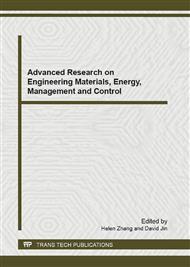p.1070
p.1075
p.1080
p.1083
p.1088
p.1093
p.1097
p.1102
p.1107
Concrete Superplasticizer Prepared from Catalytic Oxidation of Lignosulfonate
Abstract:
Bamboo lignosulfonate was modified under the role of H2O2 and catalyst in order to improve the dispersing property of lignosulfonate. Results show that the amount of H2O2 and pH value have strong influences on characteristics of lignosulfonate. Cement paste fluidity of lignosulfonate modified at pH5 and 11% H2O2 is 178mm, which is 68% higher than that of unmodified lignosulfonate. Both of oxidative degradation and condensation occur during catalytic oxidation reaction, but oxidation is the main reaction when high amount of H2O2 is applied. The structure of lignosulfonate has some relationship to water reducing property. High molecular weight, high carboxylic content and proper sulfonic group content are the main reasons that enhance water reducing property of lignosulfonate.
Info:
Periodical:
Pages:
1088-1092
Citation:
Online since:
January 2012
Authors:
Price:
Сopyright:
© 2012 Trans Tech Publications Ltd. All Rights Reserved
Share:
Citation:


